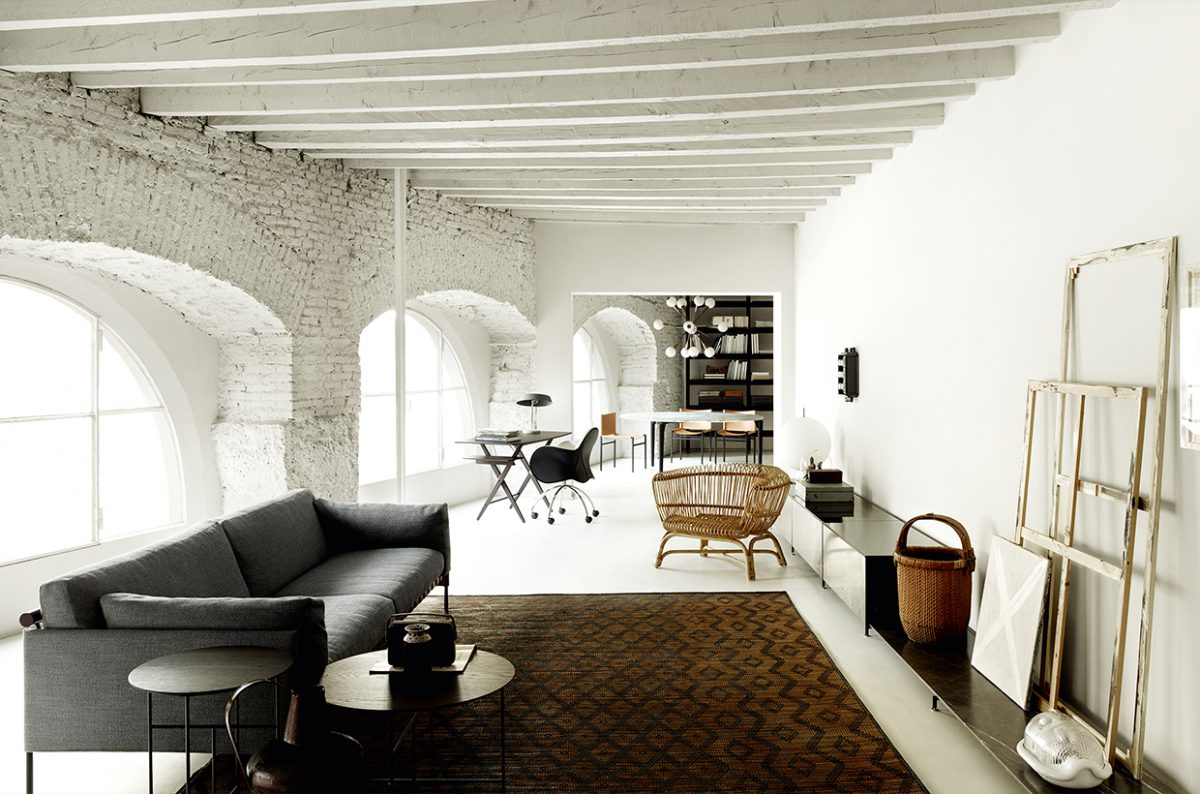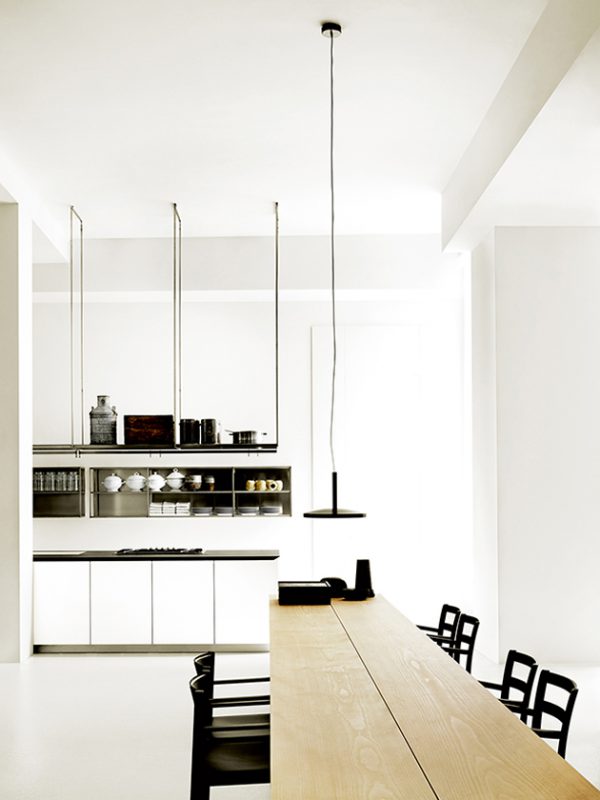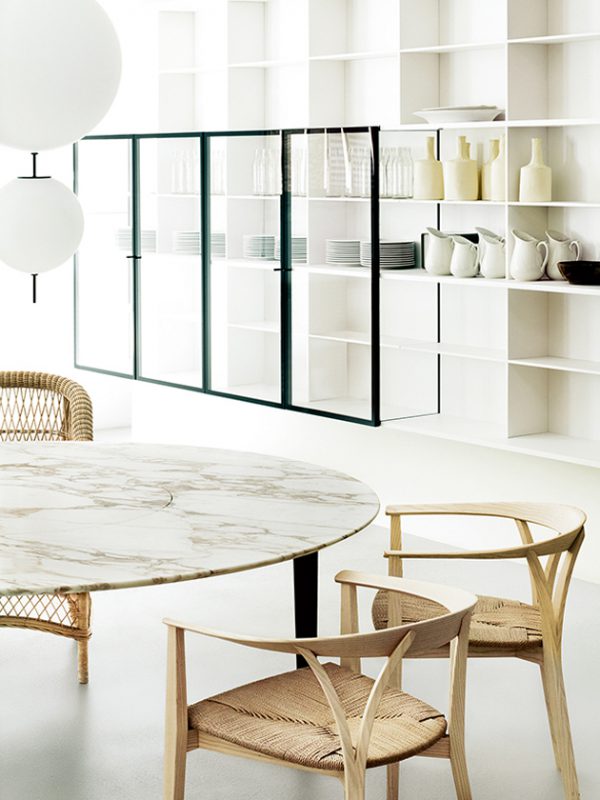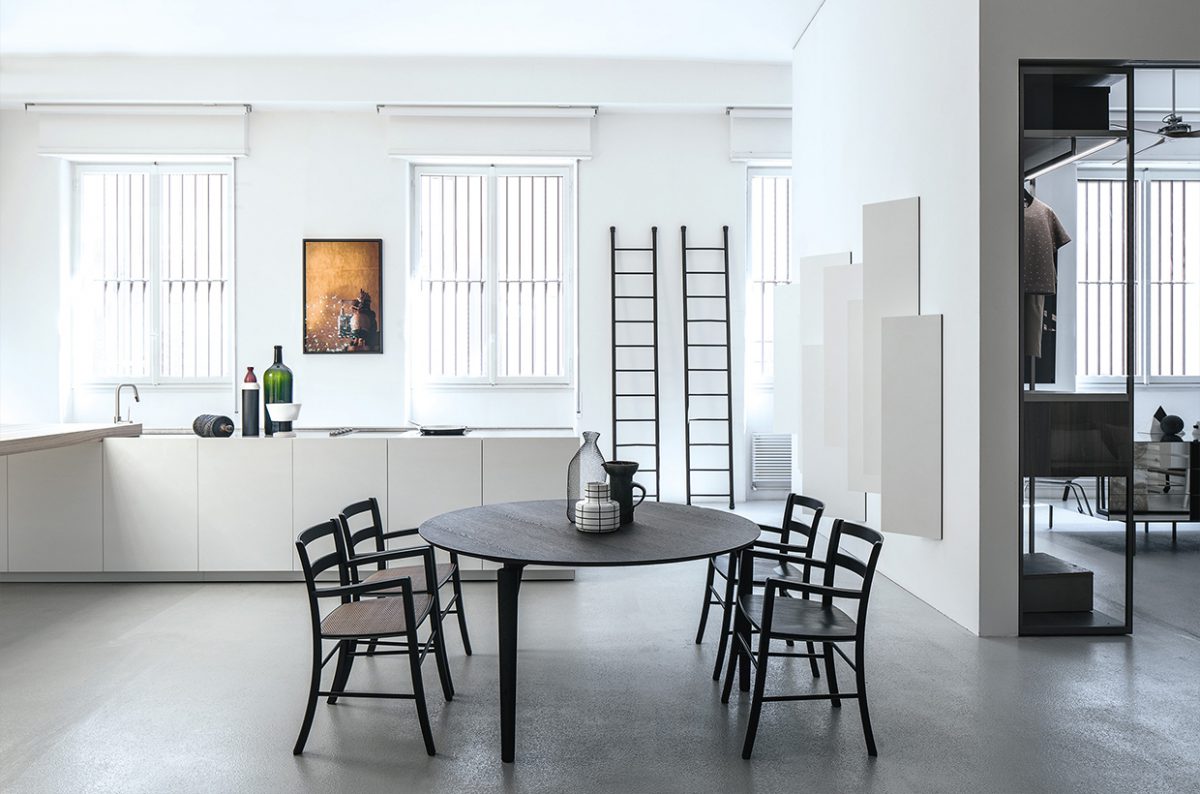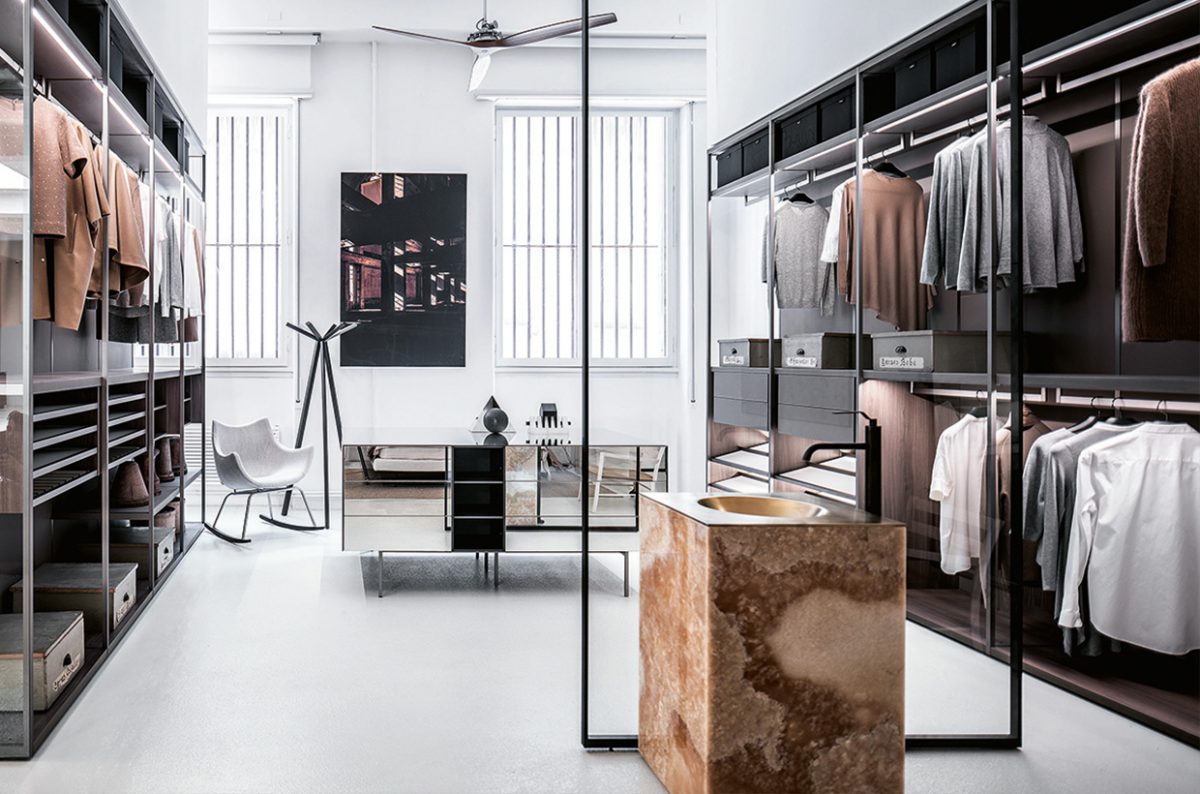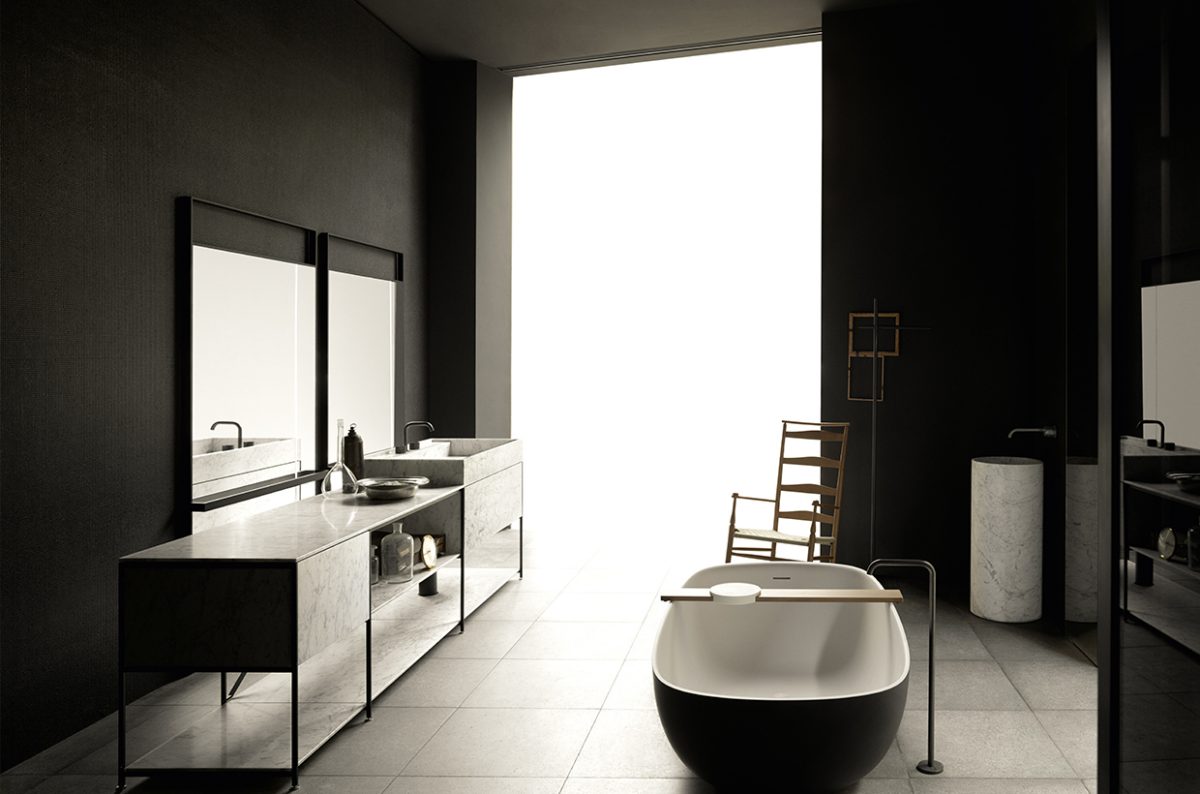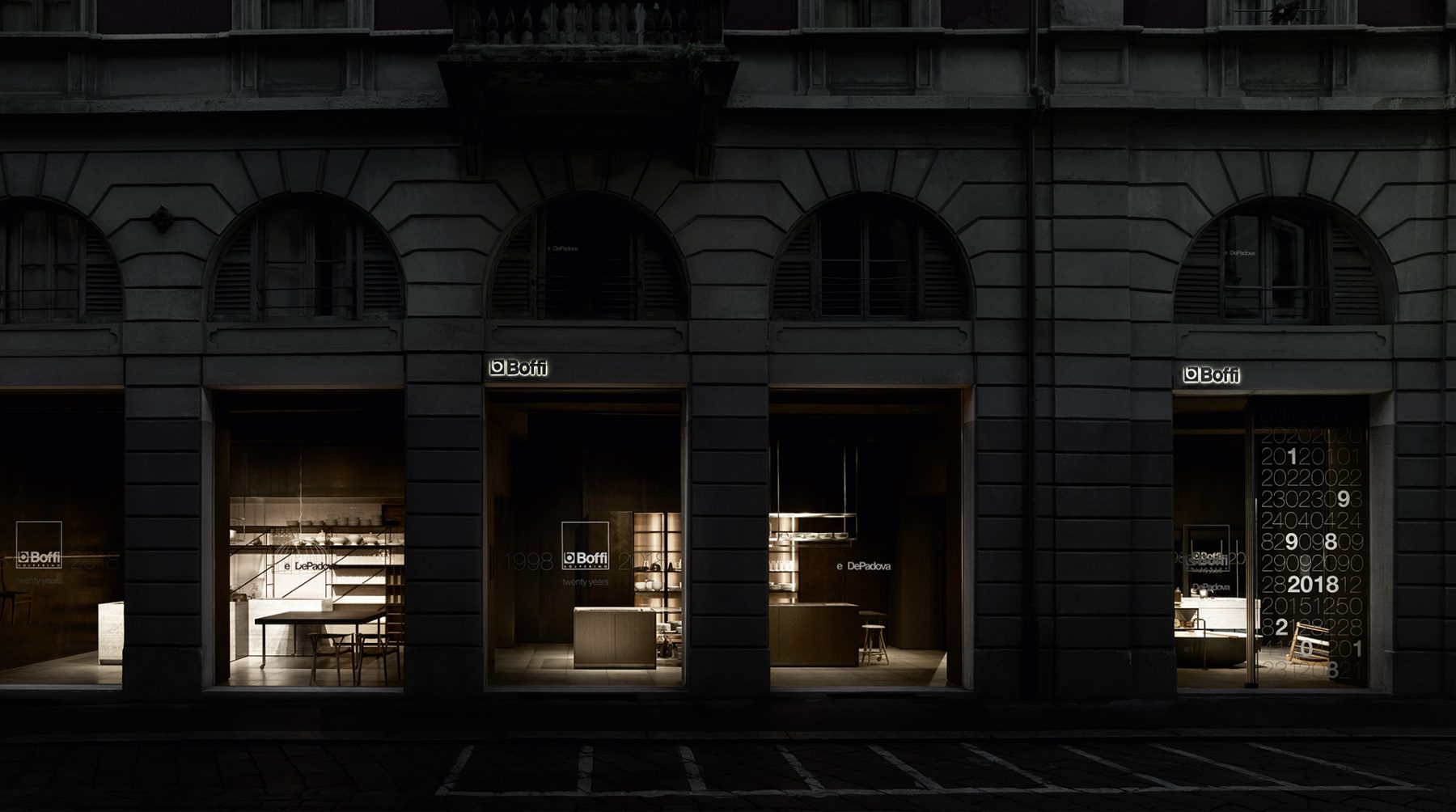Practical Sculptures by Uta Abendroth | 23rd November, 2018 | Offices
Milanese company Boffi has been producing exquisite kitchens for over 80 years. Its unique design blends technology with comfort. De Padova has belonged to the brand since 2015, bringing numerous furniture classics with it.
I’d say our furniture is emotional more than anything else,” says Roberto Gavazzi. “Obviously its practical benefits play a major role too, because at the end of the day, the kitchens we sell are extremely functional, technically sophisticated products. But perhaps that’s precisely why the emotional aspect is so important – after all, customers use the kitchens they buy for an average of 20 years.” Gavazzi has been a shareholder and CEO at Boffi since 1989. During that time, the high-end brand has developed into a global player. Nobody could really have predicted that in the early days: Company founder Piero Boffi made the first kitchens in a little carpenter’s workshop in 1934. Soon after the war, in 1947, the first Boffi factory was built in Lentate sul Seveso near Como.
The three sons Dino, Pier Ugo and Paolo took over the firm and saw to it that the “Made in Italy” label became a force to be reckoned with. As early as 1954, the launch of Series C by Asti, Favre and Boffi brought the first colored kitchen made of polyester to the market, and in 1963 Joe Colombo created the Minikitchen, an immortal kitchen design classic that contemporary variations on the mobile kitchen still strive to live up to.
When former Olivetti manager Roberto Gavazzi was hired by Paolo Boffi in the late 1980s, the company’s kitchens – including the high-tech Factory model by Antonio Citterio from 1980 – had long been considered the Rolls-Royce of the segment. But at that time, Boffi didn’t have the management expertise or money for further expansion. Paolo Boffi, Roberto Gavazzi and Art Director Piero Lissoni, whose studio is still responsible for most Boffi designs, started working on ideas for moving the brand forward. Today their collection also includes bathroom furnishings and modular systems. The three of them travel a lot, absorbing inspiration from art, restaurants, fashion and film all around the globe. And they sign up the big names of the design world to collaborate on their projects: Claudio Silvestrin, Naoto Fukasawa, Patricia Urquiola, Ludovica and Roberto Palomba are only a few of the designers they have worked with.
Boffis’ success has been fueled by an architectural trend that has emerged in recent years: It’s becoming increasingly common for rooms to flow into one another, thereby transforming the kitchen into an important part of the living space. The minimalist-to-the-max, extremely stylish models from Lentate have risen to the position of status symbols. The challenge for the designers lies in reconciling technology and functionality with a sense of coziness, which is why there are cabinet fronts not just in white Carrara marble but in dark Pietra d’Avola stone as well, not to mention walnut, bog oak, cement and metal. Flexibility is key: Selling products all over the world means being able to accommodate different tastes. It also means being able to meet highly unusual wants and needs – for a professional outdoor kitchen, for instance, or an “invisible” kitchen.
Norbert Wangen sold his company to Boffi in 2003, but the German still works for the Italian firm as a designer. His specialty: The K5, K6 and K2.2 kitchens – elegant cubes with worktops that double as lids and conceal the hob, sink and even the faucet when they’re not being used. It’s hard to imagine a kitchen that looks less like a kitchen. Or is more beautifully and cleverly functional.
With around 1,500 kitchens sold a year, this category of furniture accounts for 71 percent of Boffi’s total sales of €91.1 million. So why bother with bathrooms and modular systems as well? “Bathrooms and kitchens are bought at more or less the same time – when somebody is building a house,” says Roberto Gavazzi. “Whereas furniture is chosen spontaneously, kitchen and bathrooms aren’t. People take plenty of time to choose them and are willing to pay a lot of money for perfection. The same goes for the closets and cabinets we produce.” Boffi bought De Padova in 2015 with the aim of expanding the portfolio in a strategically wise direction – after all, customers are quicker to buy a chair, a couch or a table. Again, it’s the concept of open-plan living space that plays the crucial role here: Boffi can now cover all areas of the home – especially as, in 2017, De Padova acquired a 75 percent share in Danish startup MA/U Studio, which produces shelving and tables for private interiors and offices.
De Padova was founded by Maddalena and Fernando De Padova in 1956; it was they who brought the austere Nordic classics of Alvar Aalto and Arne Jacobsen to Italy. They went on to collaborate with Charles and Ray Eames, George Nelson, Dieter Rams and, ultimately, Milanese titans of design such as Achille Castiglioni, Vico Magistretti and Michele de Lucchi. Nicolò Gavazzi, Roberto’s son, initially spent three years working for Boffi in Asia and New Zealand after joining the company. He now oversees the De Padova label, which enjoys a very special status in Italy. “The styles of the two brands complement one another perfectly,” he says. “Both companies play a very important role in the context of Italian design, and now we can offer our customers complete solutions. That rounds off the look and style of our showrooms as well.”
For companies like Boffi and De Padova, the financial crisis of 2008 was a major turning point. Ever since, producers in this business have had to position themselves more clearly and make their presence felt. That played no small part in Boffi’s decision to open around 60 monobrand stores in all the world’s major cities, in addition to which there are now more than 200 authorized dealers who show parts of the collection. The U.S. is the biggest market at present but Asia is fast catching up, with China and India leading the way.
The “Made in Italy” label works its magic overseas as well. And in the case of Boffi and De Padova, design is the DNA of their corporate culture. That doesn’t mean everything revolves around sculptural prestige objects. Instead – and especially in the case of kitchens – it’s about custom-made solutions that combine highly developed craftsmanship with industrial production. As a result, the Italians export a certain culture, a special lifestyle. It’s precisely because cooking is such a sensuous activity and the way we furnish our homes such a very personal choice that the continuous innovations and special aesthetic play such an important role in these spaces.
